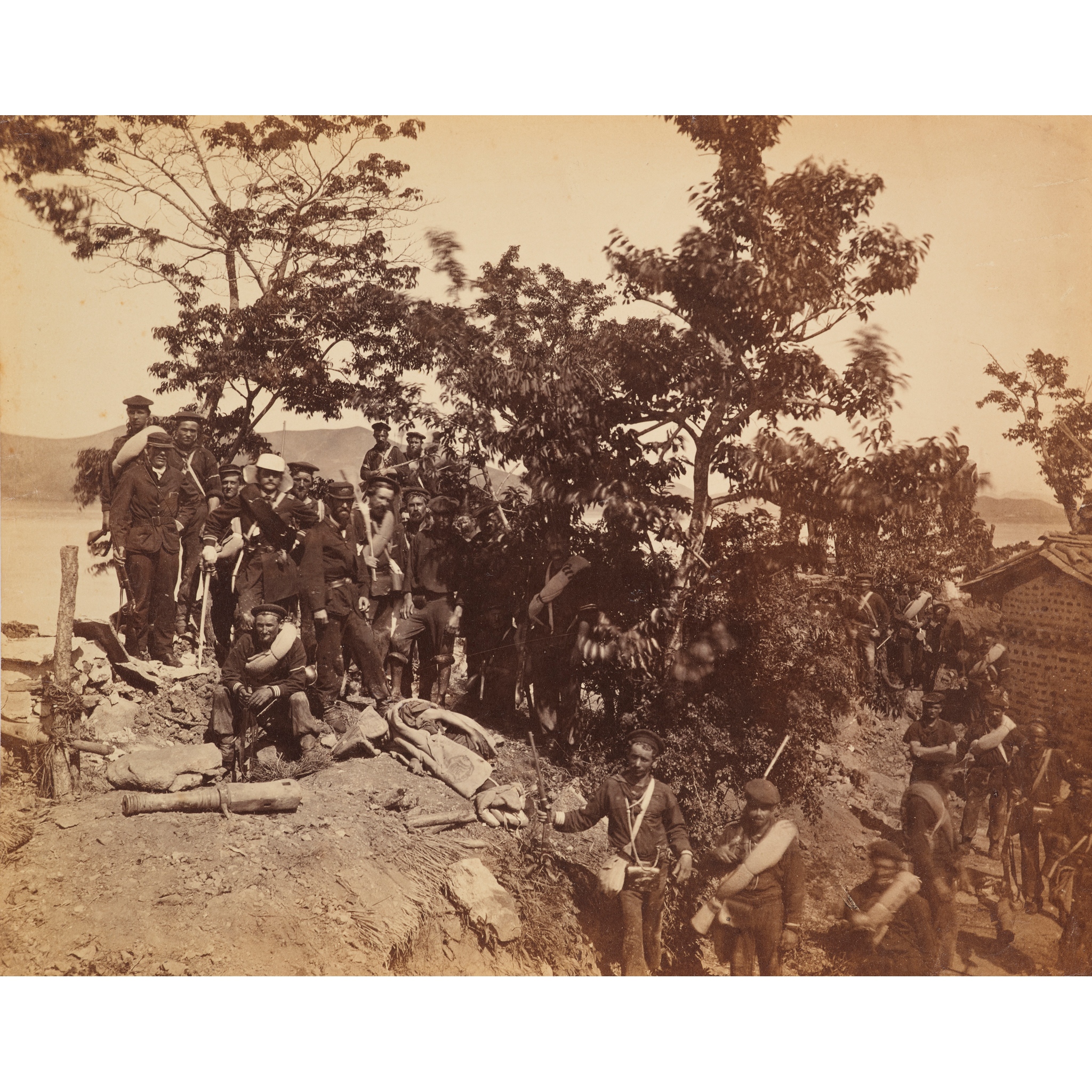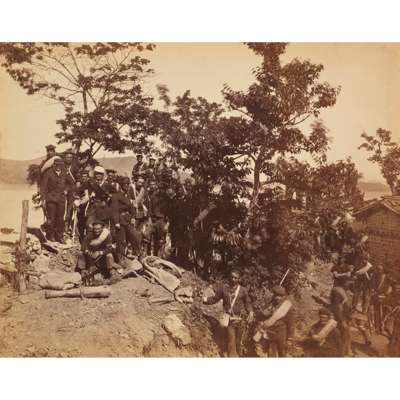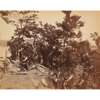
Lot 342

Beato, Felice - United States - Korea War of 1871
Lieutenant Hugh McKee and the US Marines under his Command, 10th June 1871


Auction: 05 February 2025 from 10:00 GMT
Description
Albumen photograph by Felice Beato, taken shortly after the storming of a Korean-held stronghold and the day before McKee was killed, McKee can be seen in the white hat and officer's uniform, with a dead Korean soldier lying at the feet of the marines, one of the earliest photographs taken on Korean soil, 28 x 22.5cm, slight fading towards the edges
Footnote
In May 1871, Admiral Rodgers led a fleet of five warships to Kanghwa, Korea, to enquire into the attack on the SS General Sherman, an American merchant ship destroyed by the Koreans in 1866 with all on board lost, and to open trade relations. Felice Beato was the expedition's photographer. He embarked with the fleet at Nagasaki with his assistant H. Woollett and two Japanese servants. When American diplomacy failed, Beato photographed the conflict of 10th and 11th June, including the carnage inside the captured forts. 350 Korean soldiers were killed and the Americans lost 3 - 1 officer, Lieutenant McKee, and 2 marines. Admiral Rodgers left soon after but both sides felt victorious.
Beato had gone to Shanghai by 28th June and by 30th June, with the American fleet still in Korea, had already advertised the sale of his photographs of the conflict in the Shanghai newspapers; they are believed to be the earliest dated photographs taken in Korea and therefore extremely rare.
Hugh Wilson McKee was born in 1844 in Lexington, Kentucky. He graduated from the United States Naval Academy in 1866. After serving on board several American ships he was assigned to the 1871 expedition to Korea. He was killed in action on June 11th, 1871.
The commander of the Expedition, Rear-Admiral John Rodgers, mentioned McKee in his official dispatch to Washington "... When all was ready, the order was given to rush forward down the slope and the opposite hill. The enemy maintained their fire with the utmost rapidity until our men got quite up the hill, then, having no time to load, they mounted the parapet and cast stones upon our men below, fighting with the greatest fury. Nothing could check our men; on they rushed. The heroic McKee was first to mount the parapet, and the first to leap into a hand-to-hand conflict. There he fell, as his father fell in Mexico, at the head of his men, first inside the enemy's stormed works. Other officers and men were quickly over the parapet. The fighting inside the fort was desperate. The resolution of the Coreans was unyielding; they apparently expected no quarter, and probably would have given none. They fought to the death, and only when the last man fell did the conflict cease..."

